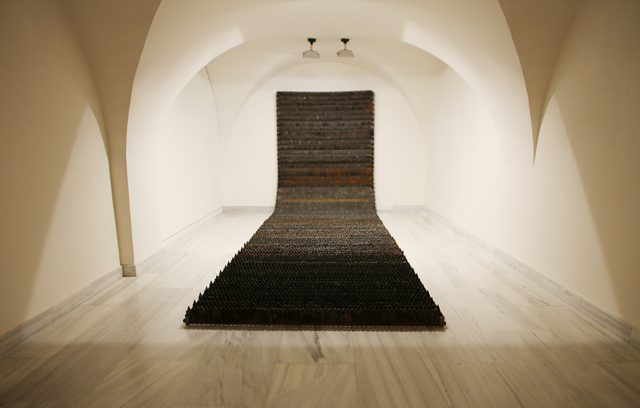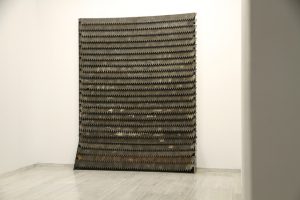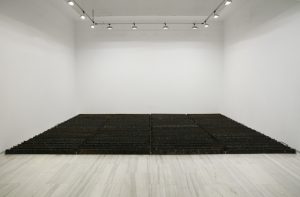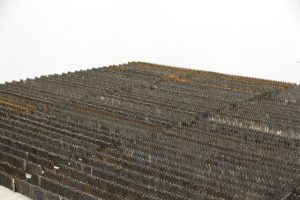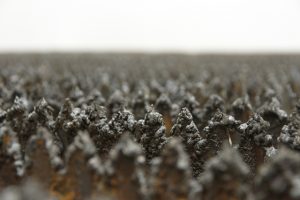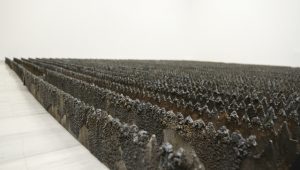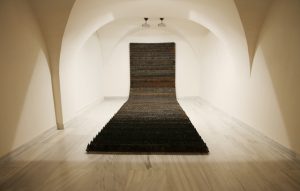Roberto Urbano. Sorge: el cuidado y la cura. Exhibition in Granada (Spain)
Exhibition “Roberto Urbano. Sorge: el cuidado y la cura”
Palacio de la Madraza, Granada University
January 24 – March 16 2018.
Curated by Nathalie Parienté
About Roberto Urbano. Those subterranean things.
“… I have discovered Roberto Urbano’s work at his exhibition The Harp and the Shadow which took place in La Empírica gallery in Granada in 2017. It was a symbolic interpretation of the eponymous book by Alejo Carpentier, one of the most emblematic authors in the artist’s personal mythology which is intimately related to South American literature.
It was presented as a ‘visual collage’ and the exhibition brought attention to the idea of paradise, especially in the Caribbean, questioning stereotypes in order to analyze the impact of the ideas of the Enlightenment as well as religious syncretism in that part of the world. The exhibition evoked all possible symbols from the founding biblical myth to the lost paradise of childhood. Anyway, paradise we have been expelled from by mass tourism and especially by modernity which is no longer a promise of happiness.
At the entrance, a pelican was observing the exhibition, reigning in his majesty like an indestructible observer and yet doubtful facing the rest of the scene. On the other side there was a palm tree, whose leaves were already cut out of steel, placed in a guillotine. Finally, two essential elements prefigured the artist’s concern in advance: a metal sea of reduced dimensions was exhibiting its spiky waves and echoing in a golden mirror whose surface, cut as if it was a jigsaw puzzle, deconstructed the image of the observer.
Roberto Urbano, “Sorge: el cuidado y la cura”. All images courtesy Miguel Angel Moreno Carretero
While the exhibition in La Empírica gallery showed a historicist and symbolic vision of the world, the works in La Madraza are of more intimist and meditative nature and are related to the awareness of being evoked by these metal pieces which are mirrors we need to get through after having defeated our inner fear.
For the artist, these pieces covered with different layers of metal represent an opportunity to ask oneself about the reality of the material and find its authenticity. In this sense, the eye of the observer is eloquent because it reproduces this very same question.
From the distance, the observer faces a dark, vague and almost blurry sea and as they approach its shore, the danger becomes more perceivable because the steel sheets evoke an imminent danger. Paradoxically, there are gaps on the floor between the sheets which open up like corollas. The observer also realizes that this ‘army of pikes’ looks line a mountain that has been nibbled by erosion and the danger is finally relative. In fact, the metal continues its process of erosion, falling off is as if it were pieces of skin or tree bark covering the space of the floor between the steel bars.
The journey through the mirror has been made without obstacles. The reality of the material has made way for the being to find its own truth…”
Nathalie Parienté, curator
From the catalogue “Roberto Urbano. Sorge: el cuidado y la cura”, translated from Spanish by Marta Drewnowicz.
Catalogue including texts by: Jan Canteras, Javier días-Guardiola, Belén Mazuecos, Nathalie Parienté.
